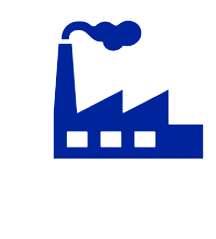
Blog
What is CCUS and how does filtration fit in?
Carbon Capture, Utilization, and Storage (CCUS) include a variety of technologies that capture CO2 and prevent it from reaching the atmosphere. Ultimately, CCUS technologies are crucial to limiting the worst effects of climate change and meeting net-zero carbon emissions targets.
For each step in the CCUS value chain, filtration and separation are critical for reducing carbon capture operating and maintenance costs and ensuring long-term equipment reliability.
Capture
Feed may contain particulate matter, liquid hydrocarbons, mercury, glycol, methanol, water, wax & salts
Such contaminants can cause, solvent foaming, increased corrosion rates, reduced capture equipment life and reduced througgput.
Storge and Utilization
Outlet CO2 stream can contain solvent, glycol and free water, which can impact downstream equipment such as dries & compressors.
Particulates such as pipe scale corrosion products can hinder CO2 storage and unitlization.
CCUS value chain: carbon capture, storage, and utilization
The Impact of Contaminants on Carbon Capture Processes
Point-source carbon capture aims to remove carbon dioxide from fossil fuel-burning plants such as power plants, refineries, natural gas processing facilities, or cement plants.
Protecting the carbon capture system by removing contaminants in these industries is critical. Solid contaminants in a carbon capture system can cause:
- Reduction in capture efficiency and throughput
- Increased corrosion
- Increased pollution
- Increased energy requirements
- Equipment and instrumentation failures
- Unscheduled downtime and maintenance
- Increase Operating Expenses
For solvent-based “absorption” processes, contaminants can cause additional issues including:
- Solvent foaming
- Heat stable salt accumulation
- Solvent losses due to degradation and aerosol emissions
As a result of these problems, the cost of capturing CO2 can increase significantly.
Lead researchers at Pall are continuing to advance filtration technologies to protect carbon capture systems and keep operating expenses related to capture system maintenance and solvent losses low.
Furthermore, proven Pall products such as Ultipleat®, Marksman®, and Profile® filters and activated carbon catridges reliably filter solvents and prevent operational problems.
Protecting Your Carbon Utilization and Storage Equipment
Upon capture, CO2 is compressed, transported, and either stored in underground geological formations or utilized in applications such as enhanced oil recovery (EOR), low-carbon fuels, fertilizer production, and more.
At these downstream stages, water, pipe scale, and other contaminants can cause problems such as:
- Corrosion and stress cracking in pipelines
- Hydrate formation from water causing pipeline blockages
- Damaged compressors or other critical equipment
- Fouling of storage reservoirs
Pall products such as SepraSol® and SepraSol® Plus liquid-gas coalescers protect carbon capture storage and transport equipment by removing particulate matter and liquids such as free water, lube oil, and glycols from dehydration units.
In addition to these standard offerings, Pall experts can work with you and specify solutions to fit your unique process needs and ensure that your equipment is protected with high-quality, reliable filtration and separation equipment.
To learn more, visit the CCUS web page or watch Pall’s on-demand webinar CO2 Capture: Protecting and Adding Value to Your Decarbonization Processes
- Category
- Author
- Sort By





